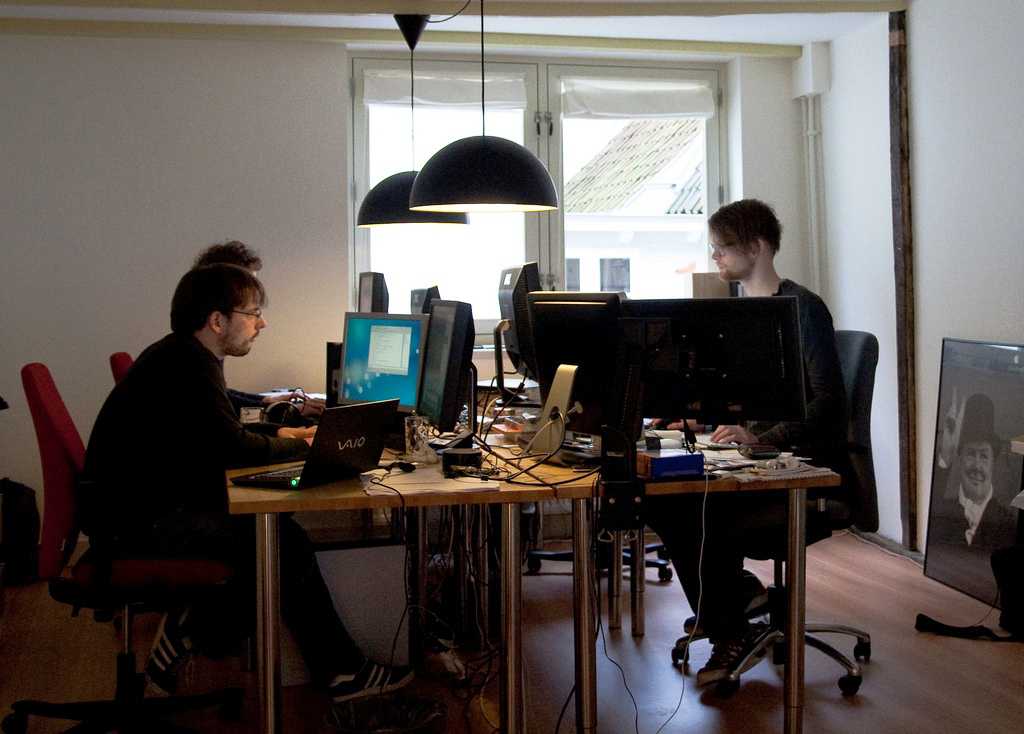The gossip and innuendo that run rampant on social media fuel the big juicy stories that make headlines. Recently, an employee of a British company live tweeted the unexpected layoff of 190 workers. And many people remember the Domino’s employees who posted a YouTube video of themselves doing unsanitary things to pizza cheese.
For obvious reasons, company leaders fear these types of social disasters. But you can harness the power of social media to make an overwhelmingly positive impact on your company. In fact, your best brand advocates could be sitting right next to you.

According to a recent study, 41 percent of people are more likely to trust a company’s employees than the public relations or marketing departments. This means that your employees’ personal social media accounts can be a powerful tool for spreading the word about your startup.
With 58 percent of Americans on Facebook, it’s inevitable that employees will post about their jobs. So how can your company make sure the message is a good one? By providing some direction and a sharable message with an employee advocacy program.
EA programs are designed to help companies empower their employees to support the goals of the brand using content and employee-owned social media channels. EA programs help ensure employees share the right information by giving them guidance, training, and the right technology.
The 3 C’s of Employee Advocacy
How far you take your EA program depends on the stage and size of your company. Most startups can keep relaxed standards and focus on teaching employees what to say. Here are three things to keep in mind:
1. Convenience: Keep your message simple, and allow employees to share with one click via their preferred social channels.
2. Compliance: Most employees aren’t sure what they’re allowed to share, so they avoid sharing altogether. Take the guesswork out of social media by providing guidelines, direction, and positive material for those who tend to over-share.
3. Credit: Everyone likes to be recognized, so make sure you reward employees who participate in promoting your brand’s positive message.
Your EA program can be as strict as Walmart’s or as empowering as IBM’s, depending on your unique employees and objectives.
At Walmart, for example, only “official” Twitter users for Walmart can tweet about the company. These users can only reply to customers and can’t engage in “unnecessary banter.” Although this might sound strict, it meets Walmart’s objective to provide excellent customer service.
IBM, on the other hand, encourages “IBMers” to showcase their unique voice, skills, and creativity on social media. IBM employees are encouraged to blog and post on social media. Despite this freedom, IBM still has clear guidelines that outline what employees can’t share.
Like everything in business, being proactive will go a long way toward protecting your brand and your employees from ill-advised sharing. Employee advocacy programs are a huge step toward getting everyone on the same page and bringing your company the right kind of attention.
 Russ Fradin is a digital media industry veteran and an angel investor with more than 15 years of experience in online marketing. He is founder and CEO of Dynamic Signal, the leading platform for empowering employees to be effective brand advocates. Learn more here.
Russ Fradin is a digital media industry veteran and an angel investor with more than 15 years of experience in online marketing. He is founder and CEO of Dynamic Signal, the leading platform for empowering employees to be effective brand advocates. Learn more here.
Photo Credits
Alper Çuğun | Courtesy of Russ Fradlin | Jason Howie













